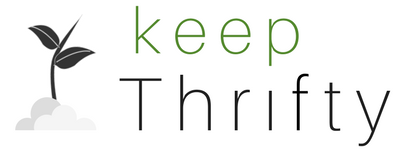
We are excited to introduce you to Cindy from Dash2Retire. Buying a home for your family to live and create memories in is exciting, but having a mortgage sucks. Cindy and her husband decided they didn’t want to stay on the 30-year mortgage track when they moved to Canada. How did they escape the mortgage trap? Cindy shares her family’s backstory, strategy for becoming mortgage free in Canada, and what’s next in their home journey.
Backstory
What was your life like before you pursued your dream?
Six years ago, we moved from Alabama to southern Ontario. My husband had an amazing work opportunity that we didn’t want to pass up. So we packed our bags and moved to another country. While moving isn’t new to us, we’ve lived in four different states, we were excited to experience Canadian life with our three kids (now teens).
Canada has been amazing. It’s much more culturally diverse than anywhere else we’ve lived and we have a ski hill within 15 minutes of the house. We were very nervous about adjusting to Canadian healthcare and curious about Canadian schools, but have found both to be excellent.
From Cindy’s blog: Comparison of American and Canadian Healthcare
What was your freedom dream and what was the inspiration/catalyst behind it?
Moving to Canada, we knew that we would want to buy a home instead of rent long term. This would be house number five for us. Mortgage number five as well. In each of our previous homes we got a 30-year mortgage and made regular payments. The thought of paying off the mortgage never occurred to us. We really relied on real estate agents for advice. Every agent encouraged us to stretch our budget and get the biggest house we could afford with a 30-year mortgage. This was even the advice from our favorite real estate agent - my mother-in-law. It was just the way things were done.
Going into house number five, we knew we wanted to handle things differently, we were sick of the ongoing payments. We wanted a house, but we wanted out from the mortgage as fast as we could make happen. We wanted mortgage freedom.

Strategy
It’s one thing to have a dream. It’s another to make it a reality. How did you plan to turn your dream into a reality?
When we moved to Canada, we rented a home, rather than buying right away. This gave us time to adjust to the new surroundings and save enough money for a sizeable down payment on a house. After 2 years of renting, we found a home for $377,000. We purchased the home in July 2013. After the closing costs and deducting our 20% down payment, our mortgage was $301,600.
Canadian mortgage rules are different than the US. The mortgage is amortized over a specified period, just like the US, however the mortgage is a term mortgage (typically 1 to 10 years.) At the end of the term, the loan is either paid in full or a new term (at today’s rate) is initiated. There are penalties if the mortgage is paid off prior to the end of the term.
In Canada, mortgage interest is not deductible from personal income taxes. Just another reason to spend as little as possible in interest.
On our loan, the lender offered several penalty-free prepayment privileges (that’s what the bank called them anyway.) The most popular option is a yearly prepayment of 15% of the original principal amount.
After a lot of financial analysis (We both have our undergrad degrees in engineering and our masters degrees. His – mechanical engineering, mine – MBA.) and with a strong desire to pay off the mortgage as soon as possible, we settled on a 4-year term mortgage, amortized over 20 years, at an interest rate of 2.5%. Our bi-weekly payments were $734.80. We took advantage of the prepayment option and at the end of the 4 years, our loan balance was $60,483.77. We paid off that amount in full in July 2017.
In total, we paid $16,262.97 in interest. Had the loan not been paid off early, the interest would have totaled $82,000, over the full 20 years of the loan.
What challenges did you face along the way and how did you push through?
One of the reasons we moved to Canada was the job opportunity for my husband. Although he had received company stock from previous employers, the potential equity and bonuses offered at the Canadian company were too good to pass up. Notice I said potential. For the first 2 years, things were great. But then a few months after we purchased the home, the company went into a downward spiral. Many of my husband’s coworkers were either laid off or left voluntarily.
For several years after we purchased the house, we didn’t know if my husband would have a job. Oddly enough, this precarious situation strengthened our resolve to pay off the house.
How did your dream evolve or change as you worked towards you goal?
As my husband continued the roller coaster ride at his employer, I really cut back on our day-to-day expenses. We were diligently working to obtain our permanent resident status. If my husband had been laid off before we obtained our permanent residency, he would have only 30 days to find a new job. Without a job, we would have to leave the country, regardless of home ownership or our children’s status at school. This was a very stressful time for us.
In addition to cutting back on our expenses, I reentered the workforce full time. When our youngest child started high school, I decided to look for a job. I preferred to work part-time, but couldn’t find a part-time position. I thought it would take several months to find a job, since I had been out of the workforce for 15 years. I was pleasantly surprised to quickly land a job as a technical writer at a software company. We banked my entire salary for one year.
I quit the job after a year, but with the contacts I made on the job, I was able to land some contract work and work on my own schedule. Rejoining the workforce reminded me how difficult it is to be a full-time parent and a full-time employee. And it made me grateful that my husband’s salary has been able to support our lifestyle on a single income.
From Cindy’s Blog: Will Our Housing Bubble Burst? Twice?

Life Now
What is your life like now? What have you learned since reaching this dream?
Things have settled down at my husband’s employer in the past 12 months. We also have achieved a level of financial security in which we know things would be fine if my husband lost his job. A big part of this security was paying off the house.
I still work occasionally on some small contracts. But the financial security we now have allows me to pick and choose when and if I want to work. It has also allowed me time to start my personal finance blog.
Do you have any regrets or things you would do differently?
Yes. We would have tried much earlier (maybe houses 2, 3 and 4) to pay off the mortgage. If we had really done the math, rather than listening to the advice of our realtors, we would have saved thousands of dollars in interest payments. It’s actually depressing to see how much of our money went to interest over the years!
What would you say to someone who wants to do what you did? Just do it! The hardest part is devising a plan and having the fortitude to stick with it, even when things don’t go according to the plan. Do the math. Seeing the amount of payment that goes each month to interest is a real wake-up call.

Another Dream Begins
We never stop dreaming and growing. What’s your next freedom dream?
We are planning for my husband to leave his day job and fully retire in 2020. That is the year our youngest kid graduates from high school. Since our kids have relocated so many times for my husband’s career, it was really important to us that all 3 kids finish high school before we moved again. We are hoping to relocate back to the US and warmer weather when our daughter finishes high school. Let’s face it, snow blows (literally and figuratively!)
The picture above shows our land in Alabama, where we plan to retire and build a future home.
How are you planning on achieving this new dream?
We’re currently in cash hoarding mode. Although we are still contributing the maximum amount to:
- My husband’s retirement account (like a 401(k))
- A retirement savings plan for me (like an IRA)
- A tax-free savings accounts (like a Roth IRA,)
We are banking 100% of our disposable income. We are also adding a small monthly amount to a US 529 plan for the youngest kid. Fortunately, a 529 plan covers college expenses anywhere in North America (FAFSA approved, of course.) Since we are planning to return to the US in a few years, we want to be ready to make a move if the loonie (Canadian dollar) gets back to par with the USD or if there is a major correction in the market.
Thank you to Cindy for sharing her story. We loved learning about how they paid off their Canadian mortgage! We wish Cindy and her family the best. We are looking forward to following their journey back to the States!
Do you have a freedom story you would like to share? We would love to hear from you! Submit your story here!
